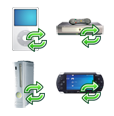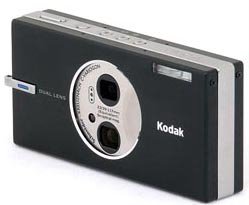Microsoft Corp. plans to launch its system for selling advertising alongside regular search results by June in the United States, giving the company its next piece of ammunition in the battle with rivals including Google Inc. and Yahoo Inc.
Microsoft has been testing its ambitious new platform for selling all kinds of online advertising, called adCenter, since last spring. Right now, the company said about 25 percent of the sponsored links that accompany regular search results on its MSN Search site are from adCenter, but that will grow to 100 percent by the time the company's fiscal year ends in June.
Redmond-based Microsoft currently outsources the job of providing such sponsored links to a Yahoo Inc. subsidiary, Overture Services, although the contract between the two expires in June.
The move to bring that job in-house is important because competitors such as Google make most of their money selling ads placed next to search results.
The launch is also a major step toward Microsoft's broader adCenter ambitions, which executives say will eventually be a system for offering companies ways to buy online advertising space on multiple platforms, ranging from its blogging sites to its newly launched Office Live system for offering business software and services online.
For that broader effort, Microsoft's adCenter researchers and developers are finishing up a series of tools that aim to provide extremely detailed demographic information, so advertisers can more accurately target their ads to the right audience. Many of those tools are expected to be available in the next six to 12 months, said Tarek Najm, adCenter's general manager.
Much of the work is being done by Microsoft's adCenter Incubation Lab, or adLab, which was also announced Thursday.
AdLab is a joint effort between Microsoft's Redmond-based adCenter and experts in its Chinese research lab. Najm said it marks the first time that a Microsoft product group is working so closely with one of Microsoft's research labs, which are typically staffed by researchers who study far-flung, futuristic or just plain quirky technology.
Najm said his group wanted to partner with the Chinese researchers because of their expertise in fields that will provide the technical and computational backbone for getting advertising to the right viewers.
The Chinese and U.S. researchers on Thursday previewed a multitude of those tools at its Redmond campus.
Overall, they aim to give advertisers a better sense of the age, gender and other traits of people who are viewing certain information online. For example, the technology could give a car advertiser the best shot at reaching women over 45, or men under 25. A movie company, in turn, could be given a better chance of reaching people who are or have recently visited sites related to entertainment.
Microsoft said it is not using personally identifiable information to target the ads.
Forrester analyst Charlene Li said Microsoft's platform has definite potential to go head-to-head with competitors such as Google and Yahoo because of the detailed demographic information it can provide to advertisers — even though people might be more familiar with the other two brand names.
"The thing about search is that it's all about performance, not about the brand name," Li said. "As long as it performs, people are going to buy it."
Still, Li said that Microsoft and the companies who sell ads will have to be subtle in their advertising, so people don't start to feel like the advertising is so targeted that Big Brother must be watching.
"You can't bang people over the head," she said.
Microsoft has admitted that it originally missed the boat on the hot field of Internet search, preferring instead to outsource the job to others. The company, whose search engine is the third most popular after Google's and Yahoo's, is now rushing to catch up.
Source













